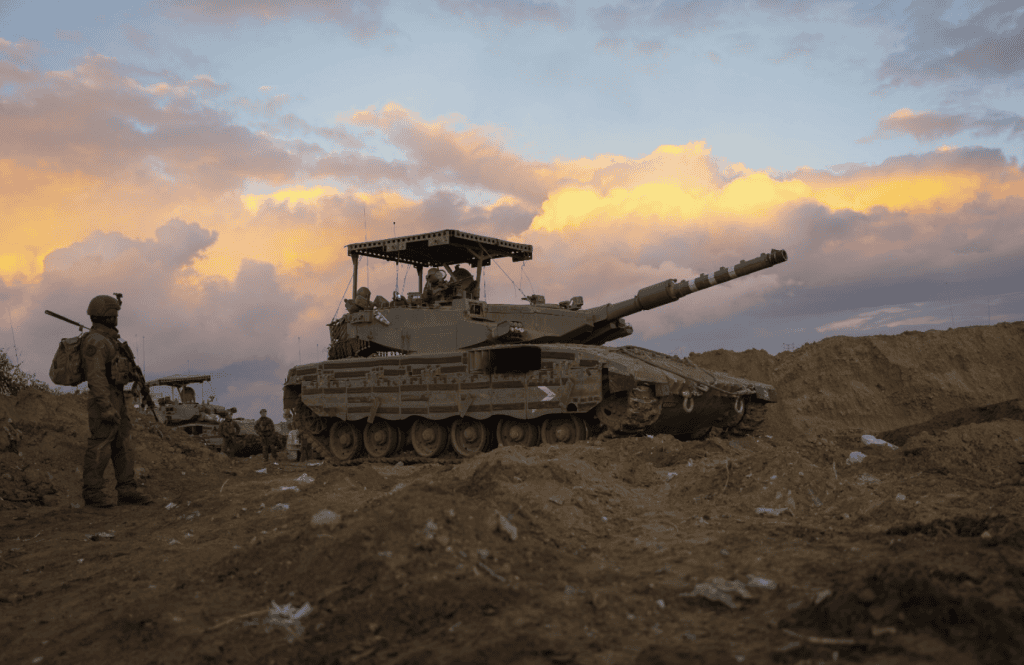
The Israel Defense Forces published extensive data collected from the last three months of fighting Hamas in Gaza. The data also includes information on the threats Israel has faced from Hezbollah and Iranian-backed terrorist groups in Syria. This information is released as Israel is transitioning its Gaza operations into lower intensity conflict and bringing home some of the reservists who had fought for more than 90 days against Hamas.
The IDF data is mostly relevant for the dates October 7 to January 9, covering three months of war. The IDF says it has struck 30,000 targets in Gaza, including 22,000 targets that were struck by December 10, illustrating that the number of targets struck did not decline greatly in the last weeks of December. However, the size or quality of the targets may have changed. 750 targets have been struck in what Israel calls the “northern arena.” This includes Lebanon and may also include Syria, although the IDF does not specify. The IDF has waged a “campaign between the wars” in Syria over the last decade, and has not often specified the number of targets struck there. The number struck in Syria is in the thousands according to details released in 2019.
In Gaza, the IDF has eliminated an estimated 9,000 terrorists, according to the new data. This includes 19 Hamas battalion commanders and “over 50 Hamas company commanders.” This would appear to mean that Hamas has lost a significant number of its mid-level commanders, but Hamas still has up to 20,000 fighters in Gaza. Hamas has lost control of northern Gaza and parts of central and southern Gaza. In strikes on Hezbollah and other terrorist groups in the north, the IDF estimates it has eliminated 170 terrorists. More than 9,000 rockets have crossed into Israel from Gaza. Some rockets do not launch properly and fall inside Gaza, meaning the real number of rockets launched by Hamas and other terror groups is likely higher. There have also been 2,000 rockets launched into Israel from Lebanon and 30 from Syria since October 7. The data on Lebanon does not distinguish between rocket fire and anti-tank missile fire, and a lot of the munitions used by Hezbollah have been ATGMs.
The IDF also says that 522 soldiers have been killed since the war began, 188 of them since ground operations began on October 27. A total of 2,536 IDF soldiers have been injured, 388 of them severely. More than 400 IDF soldiers are still in Israeli hospitals due to their injuries.
The data set was released as the IDF continued to fight on multiple fronts. In Khan Younis in Gaza, the IDF said it identified two terrorists on January 15 and called in an air strike to eliminate them. In another incident the IDF found a compound for manufacturing mortar shells and producing rockets in the area of Nuseirat in central Gaza.
Threats to Israel continued from Lebanon. On January 14, two civilians were killed in Israel by anti-tank missile fire. The IDF also identified a group of terrorists along the Lebanese border seeking to infiltrate the Mount Dov area. This area includes a mountain on the Lebanon-Israel-Syria border. Hezbollah claims the area is part of Lebanon and has often threatened Israeli forces patrolling the mountain. IDF spokesperson Rear Admiral Daniel Hagari said IDF “soldiers guarding the Har Dov area for the past three months identified a terrorist cell that had infiltrated from Lebanese territory. The soldiers acted professionally, under challenging weather conditions and limited visibility, engaged the enemy, and eliminated the three terrorists. The terrorists were found with AK-47s and grenades.”
While the threats in the north and in Gaza are now known to Israel, Israeli Defense Minister Yoav Gallant warned on January 14 that Israel may also face escalation in the West Bank: “Hamas is trying to tie Gaza, and Judea and Samaria, and to ‘ignite’ the arena. We must do everything possible to prevent this,” he said.







